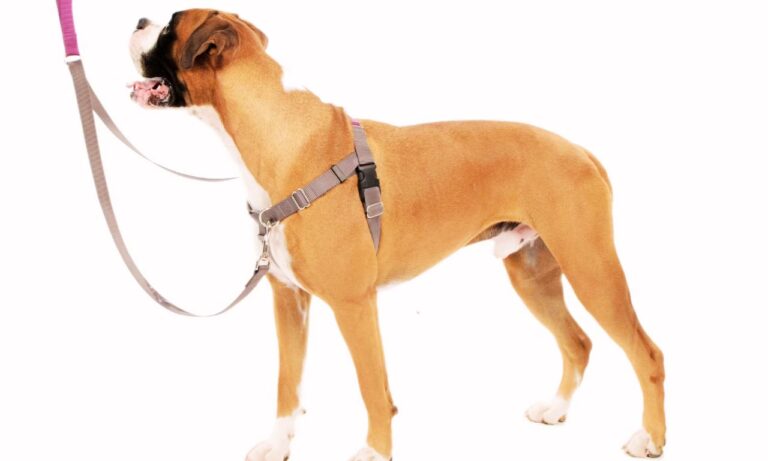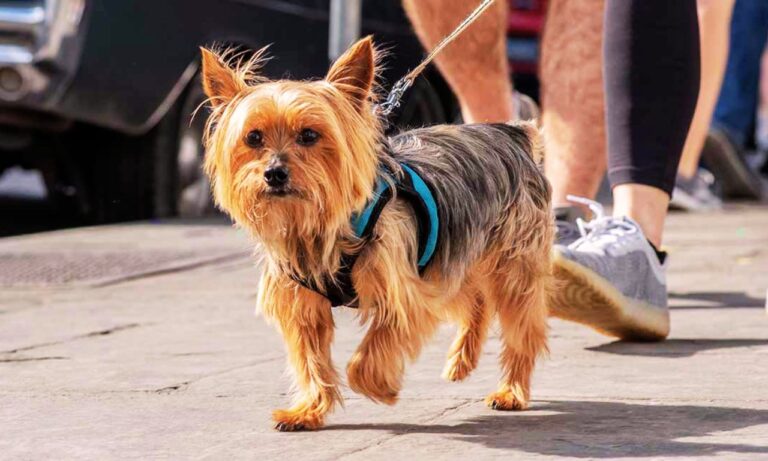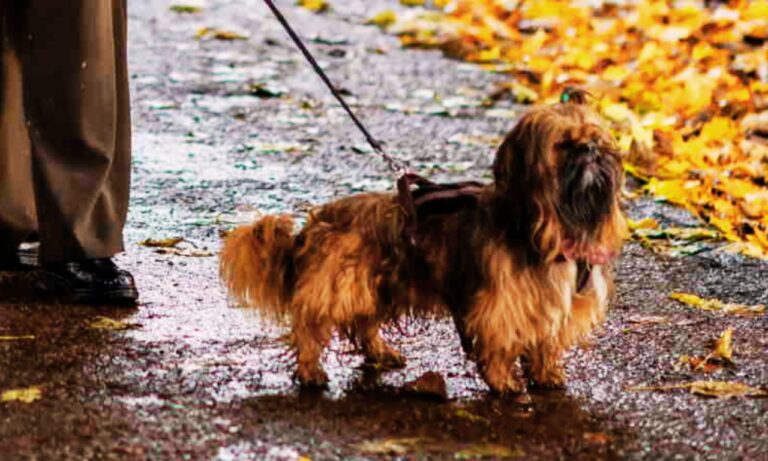American Staffordshire Terriers are beloved for their strength, loyalty, and affectionate nature. While their temperament often takes the spotlight, their physical characteristics, particularly their coat, play a significant role in their overall appearance and care requirements. So, What type of coat does an American Staffordshire Terrier have?
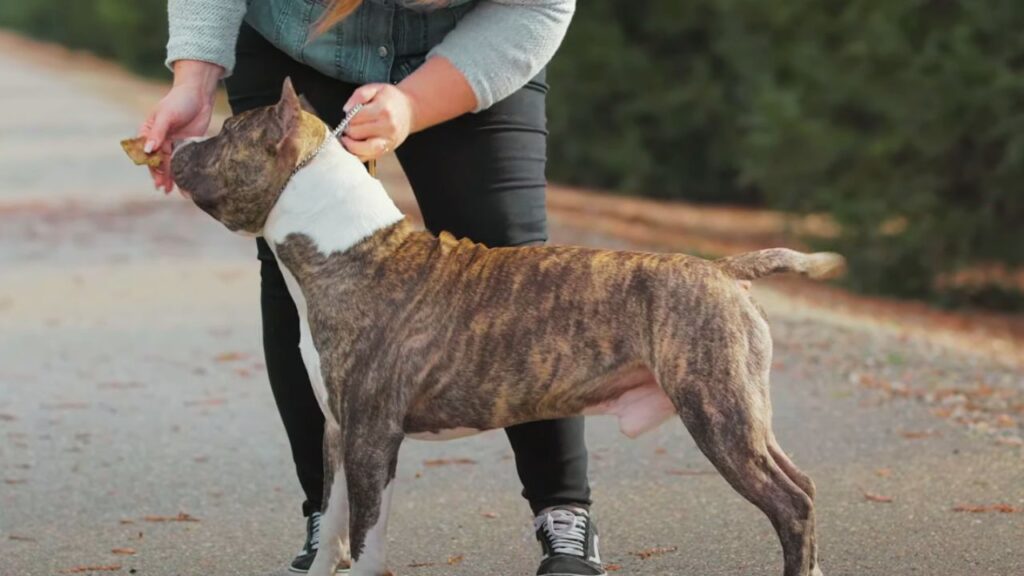
I will delve into the specifics of the American Staffordshire Terrier’s coat, offering insights into its type, grooming needs, seasonal changes, and more. To discover what activities bring joy to Australian Cattle Dogs, check out this detailed guide on What Do Australian Cattle Dogs Love.
Blog Highlights
ToggleOverview of the American Staffordshire Terrier
Before diving into the specifics of their coat, it’s essential to understand the breed’s background. The American Staffordshire Terrier, often referred to as the AmStaff, is a muscular and agile breed known for its friendly disposition and high energy levels.
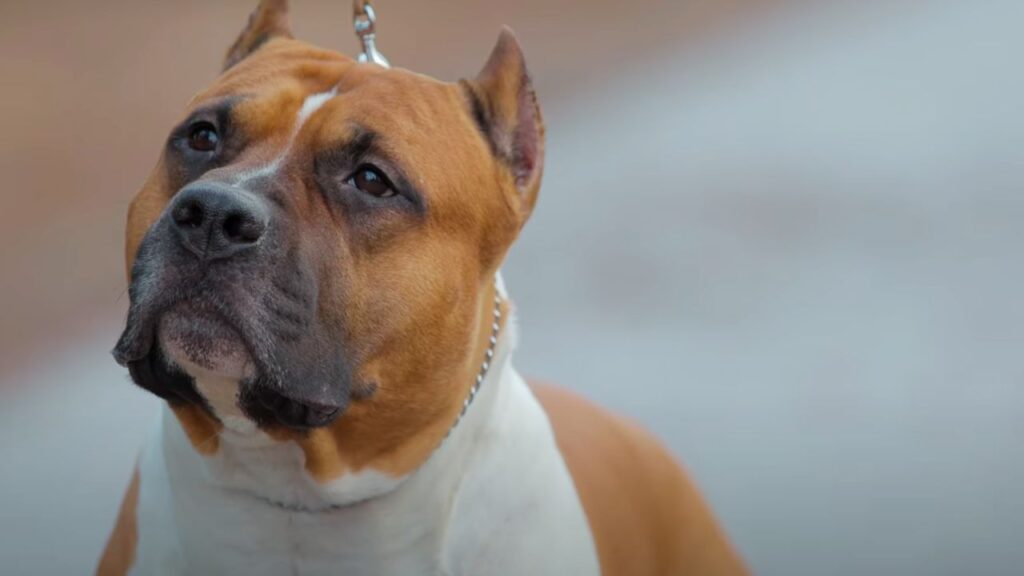
Originally bred for bull-baiting and later for companionship, these dogs have a strong sense of loyalty and make excellent family pets when properly trained and socialized.
What Type of Coat Does an American Staffordshire Terrier Have?
So, what type of coat does an American Staffordshire Terrier have? The American Staffordshire Terrier sports a short, smooth single coat that lies close to the body. It has a fine to medium texture and comes in a variety of solid colors and patterns, including black, blue, red, brindle, and fawn. This low-maintenance coat requires minimal grooming, typically weekly brushing.
Understanding Dog Coats
A dog’s coat serves multiple purposes, including protection from the elements, regulation of body temperature, and providing sensory input. Coats can vary widely between breeds in terms of type, length, texture, and color. Understanding these aspects can help owners provide the best care for their pets.
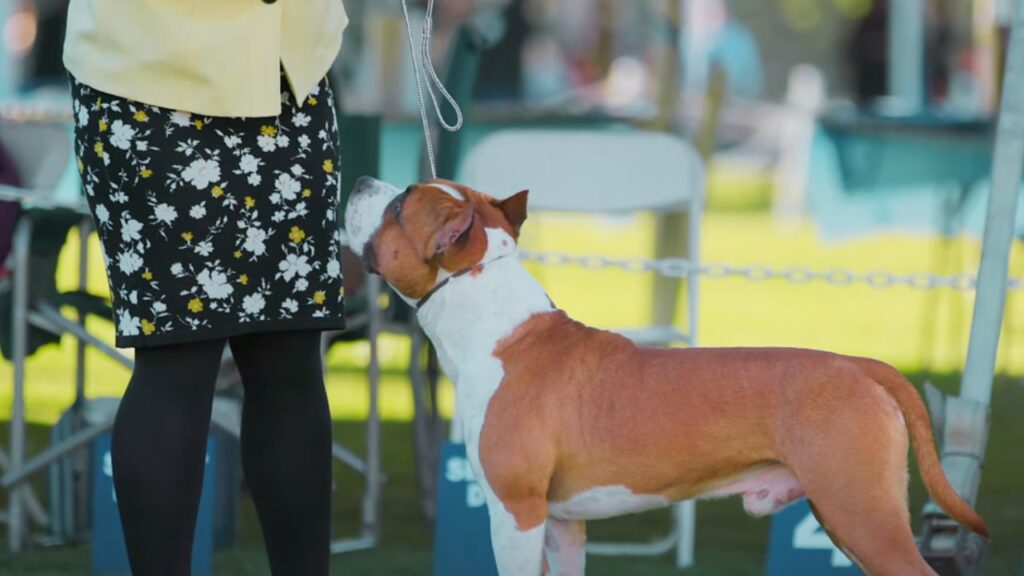
Coat Types
Dogs typically have one of three main coat types:
- Single Coat: Comprising only the outer fur, common in breeds like the Greyhound.
- Double Coat: Consisting of a dense undercoat and a topcoat, typical of breeds like the Siberian Husky.
- No Double Coat: Lacking a significant undercoat, often seen in breeds like the Poodle.
The American Staffordshire Terrier falls into the third category, having a single coat without a dense underlayer.
The Coat of the American Staffordshire Terrier
The American Staffordshire Terrier has a short, smooth coat that lies close to the body. This type of coat is low-maintenance compared to double-coated breeds, making it easier for owners to manage daily care.

Coat Length
Their coat is short and sleek, usually measuring between 1 to 1.5 inches in length. This shortness not only enhances their athletic appearance but also contributes to their ease of grooming.
Coat Texture
The coat of an American Staffordshire Terrier is fine to medium in texture. It is generally straight but can exhibit slight waviness in some individuals. The smooth texture ensures that dirt and debris are less likely to cling, simplifying cleaning. To find the ideal collar size for your Australian Cattle Dog, check out this guide on What Size Collar for Australian Cattle Dog for helpful tips on measurement and fit recommendations.
Coat Colors and Patterns
American Staffordshire Terriers come in a variety of solid colors and patterns, including:
- Solid Colors: Black, blue, red, brindle, and fawn.
- Patterns: Brindle (a mix of dark and light hairs creating a striped pattern), piebald (a combination of white with colored patches), and spotted.
It’s important to note that color does not affect the temperament or health of the breed, but it does contribute to their distinctive and attractive appearance.
Grooming Requirements of American Staffordshire Terrier
Despite having a short coat, American Staffordshire Terriers require regular grooming to maintain their health and appearance.
1. Brushing
Weekly brushing is typically sufficient to keep their coat shiny and free from loose hairs. Using a soft-bristle brush or a grooming mitt can help remove dead hair and distribute natural oils, promoting a healthy coat.
2. Bathing
Bathing should be done as needed, usually once a month or when the dog becomes noticeably dirty or starts to emit an odor. Over-bathing can strip the coat of essential oils, leading to dry skin. When bathing, use a high-quality dog shampoo to maintain the coat’s health and sheen.
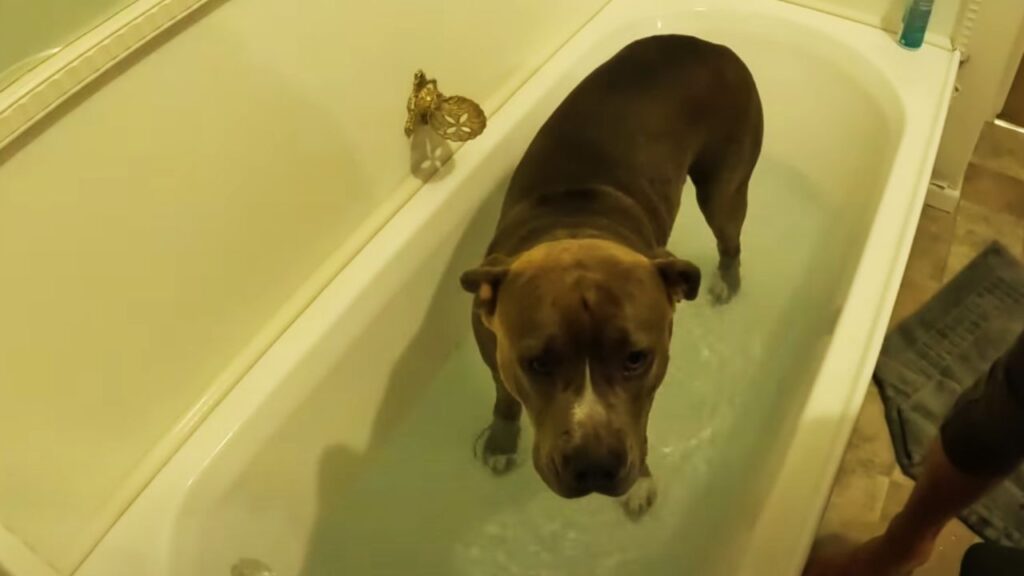
3. Nail Trimming and Other Grooming Needs
Regular nail trimming, ear cleaning, and dental care are also essential aspects of grooming. Keeping nails trimmed prevents discomfort and potential injuries, while clean ears reduce the risk of infections. Dental hygiene contributes to overall health, including coat condition.
Comparing the American Staffordshire Terrier Coat to Other Breeds
When assessing the grooming needs and overall maintenance of different dog breeds, the American Staffordshire Terrier (AmStaff) stands out for its relatively low-maintenance coat. This ease of care makes the AmStaff an appealing choice for many dog owners.
However, to fully appreciate how the AmStaff’s coat compares to those of other breeds, it’s essential to examine various aspects such as coat type, grooming requirements, shedding patterns, and protection against environmental elements. Find out what color collar looks best on a Rottweiler to complement their bold appearance and highlight their unique features.
1. Coat Type and Structure
The American Staffordshire Terrier possesses a short, smooth coat that lies close to the body. This single-layered coat is sleek and easy to manage, requiring minimal grooming compared to breeds with more complex coat structures. In contrast, breeds like the Labrador Retriever and the German Shepherd have double coats.
A double coat consists of a dense undercoat for insulation and a protective outer layer that repels water and debris. While double coats provide excellent protection against harsh weather, they demand more intensive grooming to prevent matting and manage shedding.
Other breeds, such as the Poodle, have curly or wavy single coats that require regular trimming and specialized grooming to maintain their distinctive appearance. Similarly, breeds like the Shih Tzu and Yorkshire Terrier have long, flowing coats that necessitate daily brushing and frequent professional grooming to avoid tangles and mats.
2. Grooming Requirements
The AmStaff’s short coat translates to straightforward grooming routines. Weekly brushing with a soft-bristle brush is typically sufficient to remove loose hairs and distribute natural oils, keeping the coat shiny and healthy. Bathing can be done monthly or as needed, using a high-quality dog shampoo to maintain skin and coat health.
In contrast, breeds with double coats, such as the Siberian Husky or the Golden Retriever, require more rigorous grooming schedules. These dogs shed heavily, especially during seasonal changes, and benefit from regular brushing sessions multiple times a week to manage loose fur and prevent undercoat buildup.
Additionally, breeds with longer or more textured coats, like the Afghan Hound or the Cocker Spaniel, need more frequent grooming sessions, including professional trims and specialized brushing techniques to maintain their coat’s condition.
3. Shedding Patterns
The AmStaff sheds lightly throughout the year, with a modest increase during seasonal transitions. This manageable shedding makes the AmStaff suitable for households that prefer less dog hair around the home.
In contrast, breeds with double coats experience significant shedding, particularly during spring and fall when they “blow” their undercoat to adjust to temperature changes. Owners of breeds like the German Shepherd or the Border Collie must be prepared for more frequent cleaning and grooming to handle the increased shedding.
Single-coated breeds with unique textures, such as the Bichon Frise or the Labradoodle, may shed minimally but require regular grooming to prevent their coats from becoming unruly. These breeds often produce less dander, making them more suitable for individuals with mild allergies, whereas the AmStaff’s shedding is generally not considered hypoallergenic.
4. Protection Against Weather
The AmStaff’s short coat offers less natural protection against extreme weather conditions compared to breeds with thicker or double coats. While their sleek coat is advantageous for agility and ease of movement, it provides minimal insulation against cold weather and limited water resistance during wet conditions. As a result, AmStaff owners may need to provide additional clothing, such as sweaters or jackets, during colder months or in climates with harsh winters.
Conversely, breeds with double coats are inherently better equipped to handle varying weather conditions. The undercoat of a Siberian Husky or a Newfoundland provides excellent insulation against the cold, while their outer coat repels water, keeping them dry and warm in wet environments. This natural adaptability reduces the need for supplementary clothing, allowing these breeds to thrive in diverse climates.
5. Health and Coat Quality
The quality of an AmStaff’s coat is often a reflection of their overall health and nutrition. A shiny, smooth coat indicates good health and proper care, while a dull or patchy coat may signal underlying health issues.
Similarly, the coat quality of other breeds also serves as an indicator of their well-being. For instance, a healthy Australian Shepherd will have a glossy, thick coat, whereas excessive shedding or bald spots in breeds like the Bulldog may point to health concerns such as skin infections or allergies.
Regular veterinary check-ups and a balanced diet rich in essential fatty acids are crucial for maintaining a healthy coat in all breeds. While the AmStaff’s grooming needs are less demanding, ensuring optimal nutrition and addressing any skin or coat issues promptly is vital for their overall health and appearance. Learn what size collar for a Rottweiler is ideal by following this detailed guide to ensure a perfect fit for your dog’s comfort and safety.
Tips for Maintaining a Healthy Coat
Maintaining a healthy coat involves a combination of proper grooming, nutrition, and overall care. Here are some tips to ensure your American Staffordshire Terrier’s coat remains in excellent condition:
- Regular Brushing: As mentioned, brushing helps remove loose hairs and distribute natural oils.
- Balanced Diet: Ensure your dog receives a diet rich in essential nutrients that support coat health.
- Hydration: Adequate water intake is vital for skin and coat health.
- Protect from Extremes: Provide shelter from excessive heat or cold to prevent coat and skin damage.
- Routine Health Checks: Regular vet visits help identify and address any coat-related health issues early on.
- Use Quality Grooming Products: Invest in high-quality shampoos and conditioners designed for dogs to maintain coat health without causing irritation.
Conclusion
The American Staffordshire Terrier boasts a short, smooth, and sleek coat that complements its muscular and agile physique. While their grooming needs are relatively minimal compared to other breeds, regular care is essential to maintain their coat’s health and appearance. Hope so, now you know what type of coat does an American Staffordshire Terrier have?
Understanding the specifics of their coat type, grooming requirements, and the factors that influence coat quality can help owners provide the best possible care for their AmStaffs. By following these guidelines, you can ensure that your American Staffordshire Terrier not only looks great but also remains healthy and happy throughout its life. You can learn whether Dachshunds need special collars and find expert recommendations in this article: Do Dachshunds Need Special Collars.


